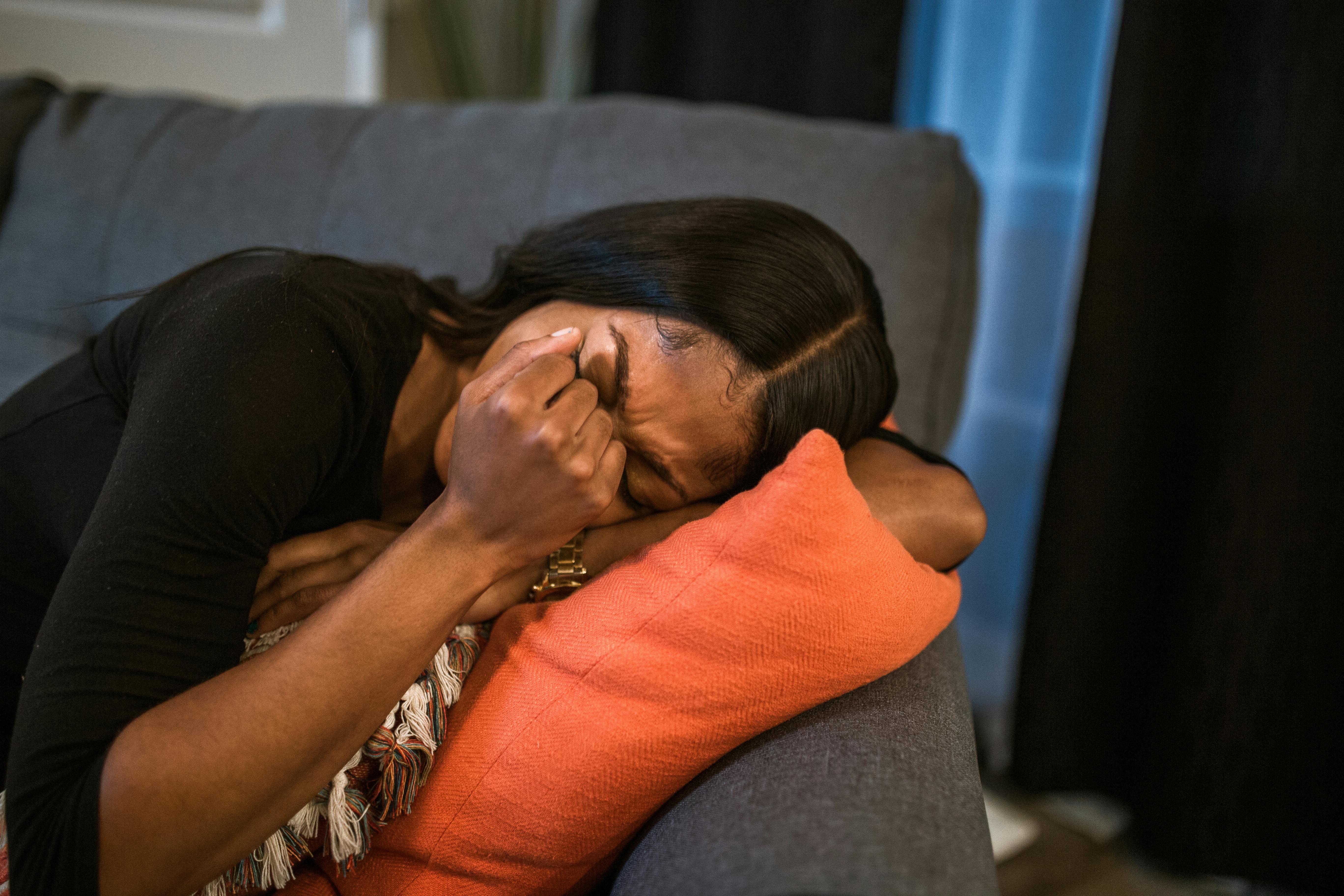Separation Anxiety Disorder Treatment | Mental Disorders
SEPARATION ANXIETY DISORDERS TREATMENT
WHAT IS SEPARATION ANXIETY?
Separation
anxiety is approximately characterized as the dread of being away from the
essential guardian. The most well-known way for kids to showcase their feelings
of dread toward partition is through fits of rage and sticking.
Separation
anxiety is a sound and ordinary piece of your youngster's improvement between
the ages of 8 and 14 months. Partition nervousness issue, then again, is an
analysis for kids who fall beyond this generally typical formative stage.
NORMAL SYMPTOMS
Despite
the fact that the partition tension issue is most normally analyzed in
adolescence, the DSM-5 gives indicative standards to the two kids and
grown-ups. Manifestations, which are regular and repeating, incorporate the
accompanying:
- concern that something awful will happen to a parent or adored one
- complaints of actual manifestations, like migraines, stomachaches, queasiness, or spewing
- distress when detachment is expected
- fear of being separated from everyone else without significant connection figures at home
- frequent bad dreams about detachment
- reluctance to take off from the house
- reluctance to rest without significant connection figures close by
- school aversion or refusal
- worry that a grievous occasion will happen that will cause partition
HOW IS SEPARATION ANXIETY DISORDER TREATED?
Numerous
nervousness issues can be treated with psychotherapy or guiding, medicine, or a
blend of both.
As
indicated by Amy Nasamran, Ph.D., an authorized analyst, and parent mentor who
work in kid conduct and tension at Atlas Psychology, most instances of
partition nervousness can be treated with treatment. She says that treatment
for partition nervousness is a kind of involvement based on discovering that prescription
alone can't give.
"For
little youngsters with uneasiness, being presented to the dread matched with
the right help and adapting abilities is the best way for them to figure out
how to beat the dread," Nasamran says. "Children must insight and
discover that they can isolate from a parent, just as master adapting abilities
to assist with conquering the dread and uneasiness."
PSYCHOTHERAPY
- COGNITIVE-BEHAVIORAL THERAPY (CBT)
cognitive-behavioral
therapy (CBT) is a well-informed, proof-based strategy for treatment for
partition nervousness issues. A specialist shows a youngster significant
abilities, for example, how to perceive sensations of uneasiness and any
relating actual manifestations that might emerge.
Kids
are instructed to distinguish their restless sentiments during conditions
including detachment and are given devices and adapt methodologies to adjust to
the circumstance. The specialist additionally encourages the youngster to assess
their triumphs as they adequately adapt in these situations, after which the
kid gets acclaim and approval from both the advisor and their folks.
While
the specialist works straightforwardly with the kid during CBT meetings,
guardians may likewise go to depending on the situation. For some more youthful
kids, in any case, CBT may not generally be the best type of treatment.
"While
there's some proof that CBT can be successful for youngsters at this age, a few
ideas identified with considerations, sentiments, and practices can be unique
and hard for youngsters to get a handle on," Nasamran says. "They
might gain proficiency with some adapting abilities and accommodating data,
however without parent support, will have an extremely challenging time summing
up abilities to various circumstances."
- PARENT-CHILDREN COMMUNICATION
TREATMENT (PCIT)
Nasamran,
who is additionally an ensured parent-kid collaboration advisor, says that
during PCIT meetings, specialists show guardians certain remedial abilities
they can use with their kids to help them in their ordinary schedules. Under
the direction of the advisor, guardians basically become their youngster's
specialist at home to guarantee they're upheld both in and outside of their
treatment meetings.
"Guardians
figure out how to make a solid and secure bond with their children, support
suitable conduct and adapting abilities, construct kids' confidence, and even
decline intense practices like fits of rage and hostility," Nasamran says.
"Guardians figure out how to diminish uneasiness indications and put their
kids in a good position in dreaded circumstances."
Exploration
shows that PCIT, alongside its partition uneasiness adjusted structure — CALM
(Coaching Approach Behavior and Leading by Modeling) — is viable for youngsters
ages 2 to 7 years of age.
- PARENT-MEDIATED REMEDY (PMT)
Similar
to PCIT, parent-mediated or discern-carried-out therapy (PMT) classes contain
intellectual fitness expert coaching remedy techniques to parents, which they
will practice with their infant.
Nasamran
says that parent-mediated (or discern-carried out) remedy may be useful in the
course of conditions in which a baby is experiencing anxiety, despair, or
different behavioral issues related to an intellectual health situation.
- FAMILY TREATMENT
Contingent
upon a kid's circumstance, family treatment might be considered to sort through
any relational intricacies that might be a wellspring of the kid's partition
tension. Guardians, kin, or different individuals from the family or close
family might join in. These meetings may likewise assist with tending to what
the youngster's division nervousness is meaning for the remainder of the
family.
- MEDICATION
Now
and again, a mix of treatment and prescription is suggested for the treatment
of partition tension problems.
While
there's proof that drugs alone can successfully treat nervousness problems in
grown-ups, more exploration is as yet expected to show that medicine can have a similar impact on adolescents.
Examination
upholds confided in Source the adequacy of CBT joined with nervousness
prescriptions, for example, specific serotonin reuptake inhibitors (SSRIs), to
treat side effects of uneasiness in youngsters. Serotonin-norepinephrine
reuptake inhibitors (SNRIs) likewise give off an impression of being a powerful
type of treatment, however, more proof is as yet required.
WHAT IS A SEPARATION ANXIETY DISORDER
IN CHILDREN?
separation
anxiety disorder (SAD) is a kind of psychological well-being issue. A youngster
with SAD stresses much over being separated from relatives or other close
individuals. The kid has a dread of being lost from their family or of
something terrible happening to a relative in the event that the individual in
question isn't with the individual.
All
youngsters and teenagers feel some nervousness. It is a generally expected
piece of growing up. Division uneasiness is typical in exceptionally small
kids. Virtually all kids between the ages of a year and a half and 3 years of
age have partition uneasiness and are tenacious somewhat. Be that as it may,
the side effects of SAD are more extreme. A kid should have side effects of SAD
for no less than about a month for the issue to be analyzed as SAD. A kid with
SAD has stresses and fears over being separated from home or family that are
not appropriate for their age.
HOW IS SEPARATION ANXIETY DISORDER TREATED IN A KID?
Treatment
will rely upon your youngster's manifestations, age, and general wellbeing. It
will likewise rely upon how serious the condition is.
Treatment
for SAD regularly includes a blend of the accompanying:
- Cognitive Conduct Treatment: This treatment assists a youngster
with figuring out how to more readily deal with their uneasiness. The objective
is additionally to help a youngster ace the circumstances that might prompt uneasiness.
- Medicines: Antidepressants or anti-anxiety
medication might help a few youngsters feel quieter.
- Family Treatment: Guardians assume an essential part in
any treatment.
- School Input: A youngster's school may likewise be
engaged with the consideration
HOW MIGHT I HELP MY KID LIVE WITH A SEPARATION ANXIETY DISORDER?
As a
parent, you assume a vital part in your kid's treatment. Here are things you
can do to help:
- Keep all meetings with your kid's medical services supplier.
- Show your youngster consolation and backing. Support age-suitable autonomy.
- Recognize circumstances that might pressure your kid. Realizing what focuses on your kid and preparing can assist you with setting up your kid so they are fruitful.
- Tell others about your youngster's SAD. Work with your youngster's medical services supplier and school to foster a therapy plan. Remind instructors that your youngster will require additional consolation and backing in specific circumstances.
- Seek individual treatment in the event that you experience the ill effects of a nervousness problem, and furthermore think about family treatment.
- Reach out for help from nearby local area administrations. Being in contact with different guardians who have a youngster with SAD might be useful.


Comments
Post a Comment